In our first Underwater Composition article, we discussed the basic “Rule of Thirds,” and diagonal, curve, and leading lines. That’s only the beginning. There are many other things to watch out for when composing your shots.
Since fish never hold perfectly still for any underwater photographer, practicing all of the components of underwater photography composition tips will help you better assess the situation based on the lens type and subjects you are trying to capture. This is certainly easier said than done, and there will be times that it just won’t come together right. Don’t get frustrated. Even those of us with years of diving under our belt have moments when the stars are perfectly aligned—and moments when no matter what we try, it just does not work.
Read Underwater Photography Composition Basics, Part I
What other aspects of composition can help you create a winning shot you would be proud to have in your portfolio? Read on!
Noise: The Cluttered Background
I’m not talking about “noise” created by shooting with a high ISO. nor am I speaking of anything audible. I’m referring to very busy backgrounds. There is always an exception – and photographing a natural history camouflage situation is it. Keep in mind, the human eye is trained to distinguish the difference between various elements in nature. Unfortunately, photographs are only two-dimensional and can flatten the background and foreground together. So if your background is very busy and you can’t even find your subject, then look at ways to make it stand out.
Changing positions or angles can be the easiest solution. Can you shoot upwards and have the water column as the background? This creates a very simple background, no matter what color the water is—brilliant turquoise or cold-water green.


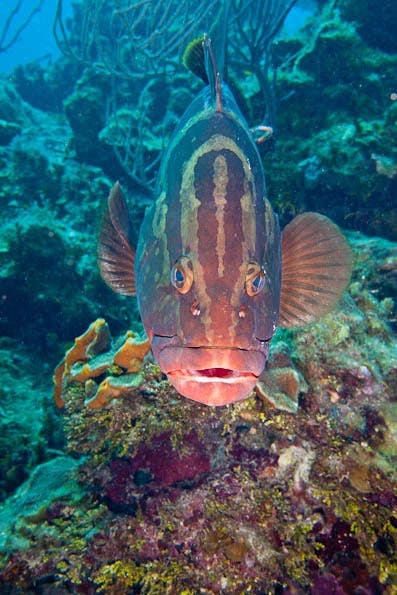
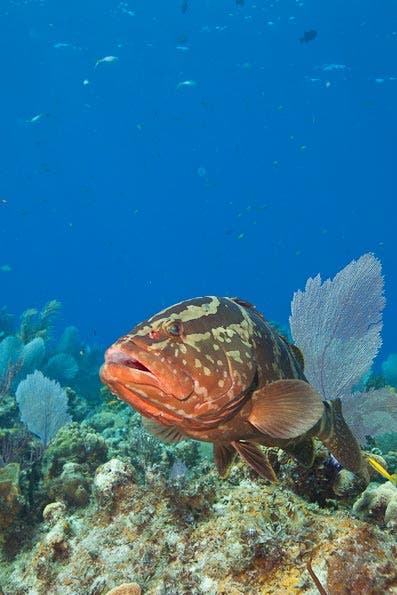
In each case above, the scorpionfish or grouper was first photographed on a down angle. When I positioned myself low to the subject, it made it possible to separate the subject a bit more from the background.


I would say if you were trying to show the camouflage capabilities of the little pipefish on the shot to the left, I would say you succeeded. However, you will also want to try to isolate this tiny creature. I was able to photograph a similar species (on the right) with better separation—at eye level and on a ledge. Both images were shot with a 100mm macro lens and dual strobes.
Another way to solve this problem is to use a very small aperture and increase your shutter speed. Many times if the subject is distanced from the background, the strobe will light just the subject and the background will be rendered very dark or black. Additionally, you can separate the subject out by using a large aperture. Because of the shallower depth of field, the background will be a pleasant soft-focus. You need to make sure you are exactly focused on your subject so it will remain sharp—and separate.
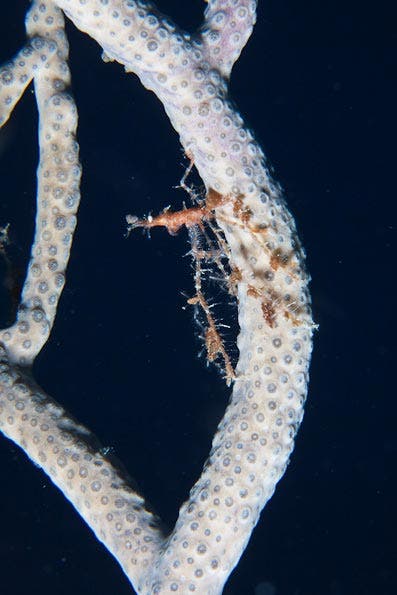
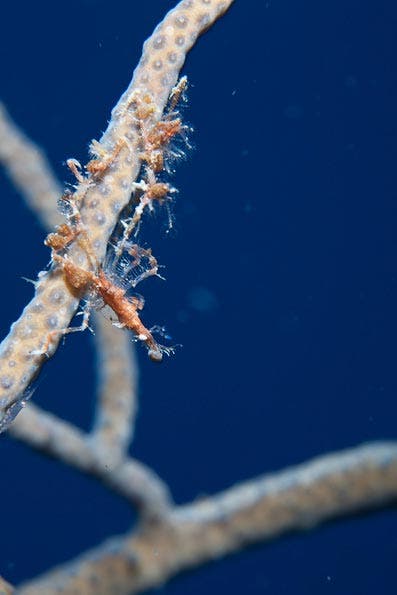
This is a very tiny shrimp on coral that was difficult to shoot. Although it is not my favorite shot, it’s a good example of using a small aperture as seen on the left.
Contrast in Color
Color contrast is another excellent way to separate your subject from a background using composition. Photographing a dark subject on a dark background won’t give the viewer a clear view of what the subject is. But how about if you see that dark colored fish against the bright background of a yellow sponge? A brightly colored macro subject may be perfect for a dark to black background.


Both of these images are a good example of contrasting colors and composition. The nudibranchs on the left were such a vibrant blue that I waited for them to move to a dark sand area. The Spanish dancer on the right is a night crawler—perfect color to contrast against the black waters when the sun goes down.

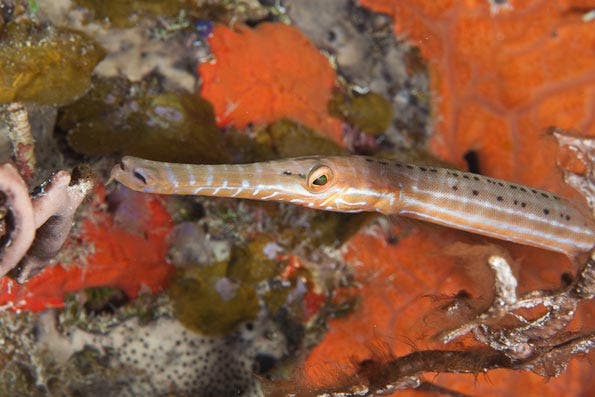
You could say the image on the left was more a lesson in cluttered background. It is a bit of both clutter and like colors. A simpler background with the brilliant encrusting sponge separated the trumpetfish out from the background.
Negative Space
When I speak with new photographers, I usually get a funny look when I mention negative space. It doesn’t sound pleasant does it? Well, it actually is something I am very aware of when I am composing an image. Negative space is the area around, in front of, behind, on top or below the subject that is absolutely clean and simple. I am most conscious of it when I’m on assignment for a publication.
Think of it this way—where would the masthead or title of the magazine go on the cover? How about an opening page spread that needs plenty of room for the text-heavy introduction to the story? More often, I use the water column for this area or in the case of macro photography, use a small aperture to render a very dark background. It can be extremely difficult with fast moving subjects, but the more you practice, the more you can make it second nature to add a little negative space to your images.


Both of these shots were planned as a magazine spread. Using my 15mm fisheye lens gave me plenty of room to work with the composition. The main subjects were not placed at the center so that if it were used in a magazine, the gutter would not impact anything critical. I also included plenty of “open” space for text.
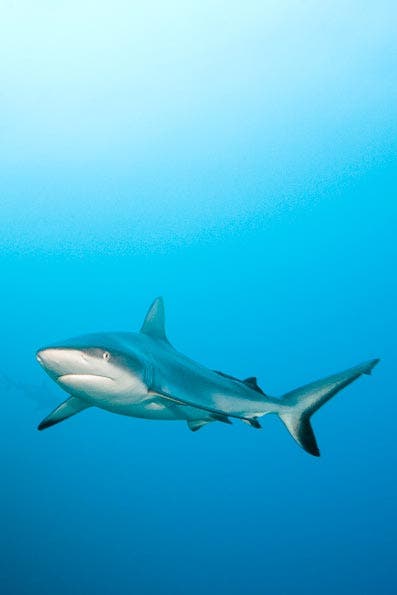

Both of these vertical shots have lots of room at the top of the image to place a masthead for a magazine. I also try to think of other print that may appear such as locations around and below the main subject for text or labels.
Composition: Framing Your Subject
Say you have your dive buddy that you want to take a picture for. Shooting them in open water is not going to be terribly exciting. Instead, think about using underwater elements to “frame” them like you would an actual picture. How about using an opening in a beautiful sea fan shipwreck? Not only is this a good way to photograph fellow divers, but it is also a technique to use for an impressive subject like a large grouper or cuttlefish.


Composition: Size and Scale
Wide angle photographers often use objects (or subjects) such as in wreck photography, to establish a sense of size for the viewer. From example, using the rule of thirds can be very helpful to place, a diver in an upper corner of the water column with a wreck in the opposite corner. The human brain knows in reality how big a person is so now they will know that relationship to the size of the wreck or object.

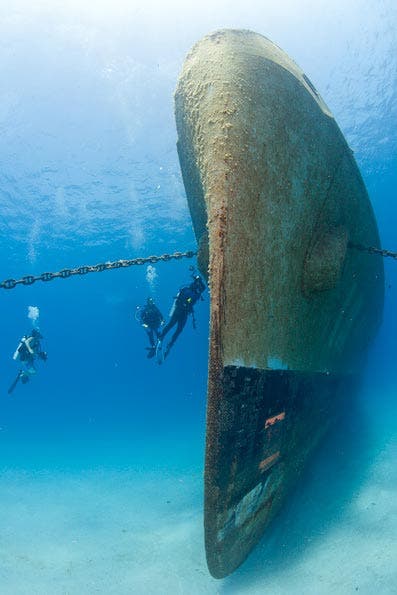

Wrecks are some of my favorite subjects. They can come in all sizes but it’s fun to show their relative size to humans.
We don’t always have the luxury of someone to model for us. In this case, maybe the dive boat silhouette can achieve the same look. With a little patience, perhaps a turtle or shark will swim into the frame and create that sense of scale.

The Eyes Have It
As a wildlife photographer, a very important rule is if your subject has eyeballs – make sure they are in focus. We as humans sense expression and that is generally formed by the eyes. The rest of the image can be blurry, but an image with the eyes out of focus will just leave the viewer empty. You can make an interesting composition by simply locking the focus on the eye and recomposing by using the rule of thirds.

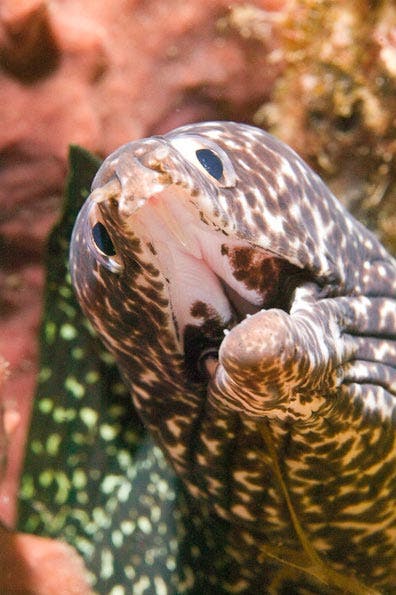
No matter where you place your subject – rule of thirds, diagonal or otherwise, make sure your focus is on the eyes.
Sunbursts
As underwater photographers, we have the unique opportunity of being able to shoot into the sun. I have to say I enjoyed this more in my wide angle photographs during the days of film. It was easier to capture the burst of sunrays through the water. Digital photography is a little more challenging and many times the sun can just look like a white blob in the image. The quality of the sunburst will be determined by the quality of your sensor among other things. But it would take another article to explain so let’s leave that for the future.

Last but not least—if all else fails then shoot very close and fill the frame with your subject. Sometimes it’s just not worth trying to get good quality negative space if the visibility and particulate is bad.
Composition Rules Are Meant To Be Broken
Yes, you’ve heard this many times before, but it is particularly important in artistic endeavors. Of course, we all started by following some rules but the most compelling photography is from those who take chances, use their imagination and creativity.

The photo above is titled “Lips.” It is one of my favorite shots of all time of an endangered humphead wrasse. I took some risks by looking for unusual angles and by doing so this image is now is one of my signature limited edition prints, a cover of a magazine and the lead photo to many other print pieces.
Originally published on June 27, 2012.



